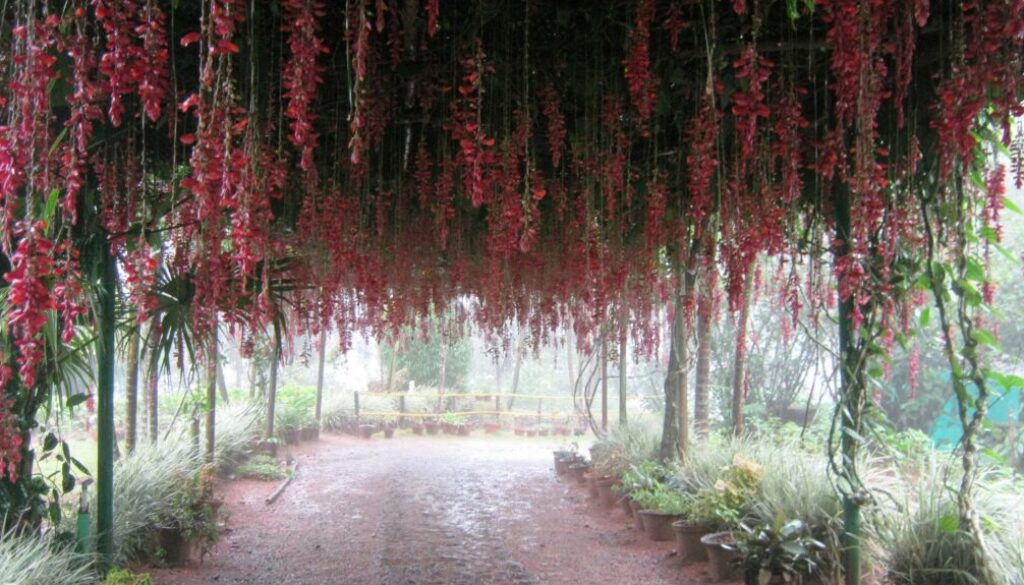Save the Planet On Your Travels
By Aparna Mele
So you want to see the world without spoiling it? There’s no easy way to do that. Simply going on a trip makes you something of a carbon hog, unless you’re planning to walk, bicycle or sail to your destination. That said, there are ways to make your trip as harmonious with the earth as possible. When choosing hotels, transportation, places to visit, consider their sustainability and how to benefit the environment and the people who live in the places you visit. Here is a guide to traveling while keeping your footprint light.
Getting There
Getting to and from your destination will almost certainly account for the biggest carbon chunk of your entire vacation, especially if you fly far away.
Driving will usually be better than flying, particularly if there is more than one person in the car, because planes burn an enormous amount of fuel, especially during takeoff and landing. An S.U.V. with two or more people is better, carbon wise, than flying. Taking a hybrid or fuel-efficient car filled with people is better still — and you should keep the speed down. If you do need to fly to long distances, there are still ways you can lessen your carbon footprint while in the air. It’s usually best to go nonstop because that allows for more efficient use of the aircraft. Going coach is also greener than first class, because you are taking up less space. It’s much more eco-friendly to take public transportation to get to the airport than using a car. And before you leave home, make sure that the heating or cooling, as well as unnecessary appliances, like the modem and the DVR, are turned off.
Choose overland travel where possible rather than domestic flights. According to national rail operator Amtrak, a rail journey emits 70 percent fewer greenhouse gas emissions than a short-haul flight of the same length. Trains also allow you to experience more of the destination.
What about cruise ships? While boats are far more fuel-efficient than most other modes of transportation, you still have to get to the port, which often requires a flight, and once you’re onboard, a cruise ship is always moving, and thus running its engines. Environmentalists complain that cruise ships dump sewage into the water, not to mention the issue of air pollution is another concern. Newer ships are being developed that are powered by liquefied natural gas, which will reduce some exhaust pollutants.
It may soon be a new and greener era for all kinds of travel. Prodded by climate and air-pollution regulations and the desire to save money, transportation is getting cleaner all the time. Each year, more fuel-sipping (or electric) cars take to the roads. Aircraft, too, are becoming more efficient, and one day, perhaps, they could run routinely on biofuels.
What To Bring
Travel as light as possible because every pound causes the aircraft to burn more fuel. Bring metal or bamboo utensil kits with you in your handbag to avoid using plastic airport utensils. Pack canvas or mesh bags with you to shop with, so you can skip the plastic bag you get with purchases. Consider dedicating a portion of your luggage space to carry donations for the place you are visiting, such as medical or school supplies. Bring your own stainless steel reusable water bottle to refill rather than using plastic water bottles. Pack coral reef-friendly sunscreens with zinc oxide or titanium dioxide and that avoid harmful oxybenzone (or BP-3), which causes coral bleaching and prevents coral from reproducing.
Mindful Exploration
It is better to take longer and less frequent vacations. If you travel slowly, taking time to explore a region and using varying modes of transportation to get around, you get the vital opportunity to let the journey be a part of your experience. Not only is the experience more enriched with adventures, you get to do a lot more and meet many more people along the way.
The most environmentally friendly vacations, and some of the best vacations in general, are all about relaxing. The less you drive around on unfamiliar roads, the happier you, the family, and the planet will be. But if you do drive around, the best environmental choice is to rent a small, fuel-efficient car and resist the S.U.V. upgrade. Focus more on the experience of traveling than on acquiring souvenir trinkets or other kitschy items while on the road.
Theme parks are not a particularly green travel genre, but if you go, try to find parks that are trying to reduce their environmental footprint, and try to reduce the amount of trash you generate while there. Allow yourself to get in touch with nature. Cycling, camping and sailing tend to be low-carbon options that get you out into nature. Kids can entertain themselves for hours on the beach, and families can engage deeply with nature while camping in the woods. Be sure to follow the “leave no trace” guidelines and take back out what you take into the wilderness.
Think about visiting placed less travelled by others. Tourist hotspots can overwhelm the local infrastructure and can impair the lives of the local people because of the massive number of visitors crowded in the same space with increased demands taxing local supplies and increased human to human contact, which spreads disease. The needs of locals should always supersede the needs of tourists. Look for accommodations, experiences, stores, restaurants that are locally owned so that the money you are spending goes back into the local economy. Rather than international chains, find places where > 75% of the workforce are local residents.
Find eco-friendly accommodations that make environmental protection a priority, that advance environmental sustainability by reusing, recycling, and minimizing their use of precious resources, and that make local donations that positively impact the community. Wherever you end up staying, it’s best to minimize your use of heating and cooling. Besides maneuvering the thermostat and turning the system off when you go out, turn off all lights and try closing the curtains during the day to reduce the heat from the sun.
Be mindful of your “food print” as well as your footprint: Skip meat and eat a plant-based meal on some days of your trip, say no to buffets, and pick in season ingredients and locally made dishes instead. Farm to table meals do this!
Travelers used to cross the world to ride an elephant or swim with dolphins, but awareness of the cruelty of that sort of tourism has grown. Now, people can experience the world’s wildlife safely and ethically, at legitimate sanctuaries that prioritize animals’ needs and safety. Look for Fair Trade labels and Wildlife Friendly Enterprise Network (WFEN) verification (certified with strict criteria you can trust) on products you buy that tell you that they are ethically made and helping to save wildlife, respectively. You can buy elephant-friendly tea from India, grown in gardens that have eliminated razor-wire fences, and jaguar-friendly coffee from plantations in Costa Rica that prohibit hunting on their lands. Support businesses that have stopped selling and promoting venues that offer elephant rides and shows and refuse to support any wildlife entertainment activities, like dolphin shows and tiger-cub petting, that cruelly exploit animals.
Be a thoughtful tourist. Respect the local culture and customs of the people and ecosystem and don’t just barge into their lives. When you travel, make it your goal to disturb wild animals as little as possible. Guides and tour operators in many parts of the world often create artificial wildlife experiences to bring in better tips. So if you find yourself encouraged to hold, pet, take selfies with, or feed wildlife, simply refuse. Respectfully learn and engage, while allowing the local people and animals room to live their lives. Always remember that visiting them is a privilege, not a right. When done correctly, sensitive low-impact, high-value tourism can help communities economically, and also create a sense of pride in who they are and what they have to share. Look for sustaining initiatives when you travel: celebrate and support them and keep asking your hosts how have locals been involved and what do they stand to gain from your presence there. Find opportunities to leave something good behind before you leave, by volunteering or donating your time, resources, and money to help the communities you visit. When travelers actively look for experiences that give back, it creates long-term benefit and the surge in demand for authentic, experiential travel encourages companies to think this way and deliver.
–
Sustainable travel is the best way to explore the world, creating enriching experiences for you while supporting the planet, the local ecosystem, and the communities you visit. Happy and safe travels this holiday season!



